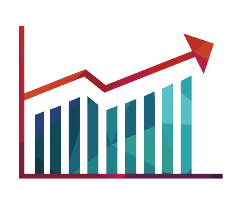Announcement posted by Comworth 30 Sep 2014
With its transformational effect on everything from education and manufacturing to construction and architecture and with countless applications in business and medical fields, it should come as no surprise that 3D printing can have a significant positive impact on economies as a whole. And as the consumerisation of technology puts once costly devices within the grasp of small businesses and even home users, that macro-benefit is on the verge of becoming a reality.
That’s the observation of Paul Francois, product manager atComworth Technologies which distributes the XYZ range of 3D printers that retail under $1000. “Individually, all the applications of 3D printing make for incremental improvements in a variety of processes and activities which are fundamental to modern economies,” he says.
Cumulatively, those improvements mean the economy gets a boost on a macro-scale – and that has caught the attention of analysts, market watchers and professional services companies, with Gartner noting ‘3D printer investments can be modest yet offer organisations significant advantages and has benefits for enterprises, governments and educational institutions today’.
Such is the potential for 3D printing that Canalys predicts the global 3D printing market will grow from $2.5B in 2013 to $16.2B by 2018 – a compound annual growth rate of 45.7%.
Professional services company PwC predicts that within three to five years 3D printing technologies will be used for producing military, commercial and complex weapon parts and system components. It observes that ‘as quality and speed continue to improve, 3D printing will become a viable process for an ever-increasing number of applications, including traditional production parts. No one knows how rapidly the technology will take to mature, but most experts believe it will make significant strides within the next five years’.
With entry-level devices like the XYZ Printing Da Vinci 1.0, which Francois says retails for $899 and takes a 600-gram consumable which costs $45, the commercial application is predominantly in prototyping and modelling. “Locally, we’ve had architects, packaging manufacturers and marine manufacturers take great interest in this device because it allows them to create models on-demand in a fraction of the time it would previously have taken and at a fraction of the cost,” he adds.
Looking deeper into the phenomenon of 3D printing, Francois says the benefits only amplify as the technology is applied further up the value chain. “Prototyping is one thing, manufacturing quite another. Industrial-scale 3D printers are increasingly being used to produce complex components which would once require laborious sand-mould casting or machining – processes which not only take time, but also produce a great deal of wasted material.”
For example, jet engine manufacturer GE is hoping to use metal 3D printers to produce fuel nozzles which once required welding of 20 discrete parts. By printing them with a machine that uses a specialised metal, cobalt chromium, GE expects a nozzle 5 times more durable and which takes a fraction of the time to make.
With items like engine blocks still made by sand-casting – where a mould is made from sand, filled with molten metal, then manually machined – 3D printing can revolutionise the cost base of motor manufacturers. “With 3D printers, complexity which has always required manual labour, is no longer an issue. A simple object costs relatively the same to print as a complex one, and that takes a massive amount of cost out of manufacturing, where complexity has always come at a serious premium,” Francois notes.
But while industrial applications for 3D printers still require considerable investment and specialised equipment, Francois says even the entry-level devices can and are having an economic impact. “For under $1000, inventors, entrepreneurs and people with good ideas can get started. The XYZ Da Vinci 1.0 is as easy to use as a regular printer, too, allowing anyone to set it up and start producing models.”
Simply put, says Francois, as quality and speed increases and cost decreases, 3D printing will shift from prototype to mass production usage.
However, while 3D printing can revolutionise the economy, he adds that there is a caveat. “Ours is not the only economy with a vibrant manufacturing sector. Competition means there is a window of opportunity which needs to be taken advantage of; before long, 3D printing won’t mean a competitive advantage, it will be a competitive necessity.”

